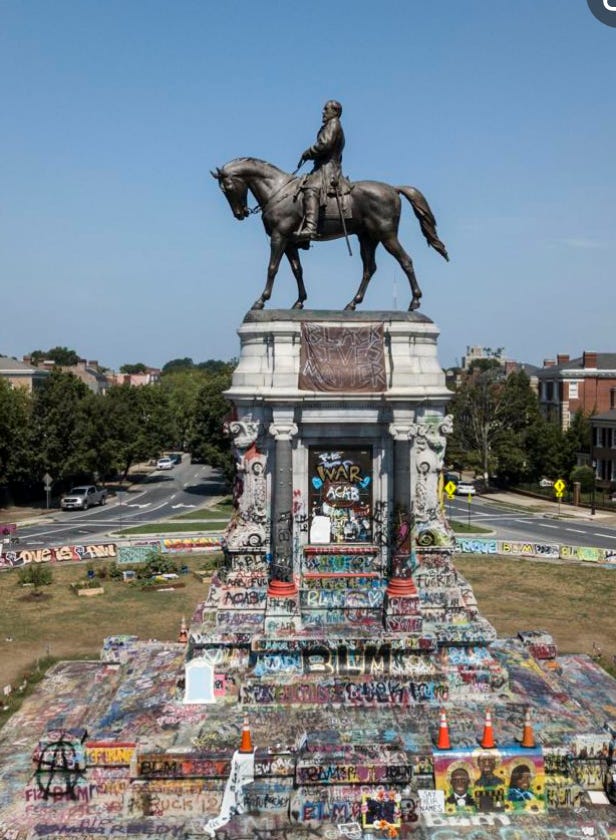For 131 years, on a Richmond, Va., pedestal lately bedecked by protesters, a humongous statue of Robert E. Lee has stood as a monument to an economic system built on people owning people.
Growing up in the semi-South, I was taught that Lee was a hero who reluctantly led the secession movement that split the country because he thought the rebels would benefit from his military prowess. He thought he could save lives if he led the Confederate troops, in other words.
None of that is true. That the kindly, reluctant leader is a hero is fiction. Lee fought a lost cause (lower case) to help white people retain the right to own black people. When white supremacists talk about these monuments honoring a “way of life,” that is precisely the way of life they reference, where one race is considered superior to others.
I was also taught that Lee abhorred slavery, but if he did, he was pretty cagey about it. Here’s a portion of a letter Lee wrote his wife in 1856 where he examined his feelings about slavery from the comfort of his own estate. First, he writes that slavery “is a moral & political evil in any Country.” That is the line most apologists quote, and bless their hearts. But read the part of the letter that gets ignored, and remember this was a letter to his wife, a missive in which one would assume he could be completely honest:
I think it however a greater evil to the white man than to the black race, & while my feelings are strongly enlisted in behalf of the latter, my sympathies are more strong for the former. The blacks are immeasurably better off here than in Africa, morally, socially & physically. The painful discipline they are undergoing, is necessary for their instruction as a race, & I hope will prepare & lead them to better things. How long their subjugation may be necessary is known & ordered by a wise Merciful Providence. Their emancipation will sooner result from the mild & melting influence of Christianity, than the storms & tempests of fiery Controversy.
So Lee was an abolitionist? No. Not by half.
Two recent unanimous Virginia Supreme Court decisions rendered his Richmond statue — which towered six stories, with the pedestal — removable. That was accomplished on Wednesday. The court decisions centered around compelled speech, as in, you can’t make someone or something say something that someone or something doesn’t want to say. From one of the court decisions, in addressing covenants the pro-Lee statue side argued protected the emblem:
Those restrictive covenants are unenforceable as contrary to public policy and for being unreasonable because their effect is to compel government speech, by forcing the Commonwealth to express, in perpetuity, a message with which it now disagrees.
The statue — which some news reports called the largest physical example left of Confederacy mythologizing — put the whole “Lost Cause” into sharp relief for people in 1890. For all these years, the giant statue served as a touchstone to the whole misbegotten notion of white supremacy.
Next up? Removal of a time capsule thought to be buried in the base, to be replaced by a time capsule with more relevant contents. So yes. Lee and the horse he rode in on, and his box of mementoes, too.





The arc of the moral universe was pretty damn long in this instance, but it has finally bent towards justice. Blessings to all who have lived to see it ❤️, and to the souls of those who did not 💔.
The sheer volume of protest graffiti is quite impressive. Blows my mind that racism is still a thing in "The Land of the Free." But here we are. Glad to see this change.